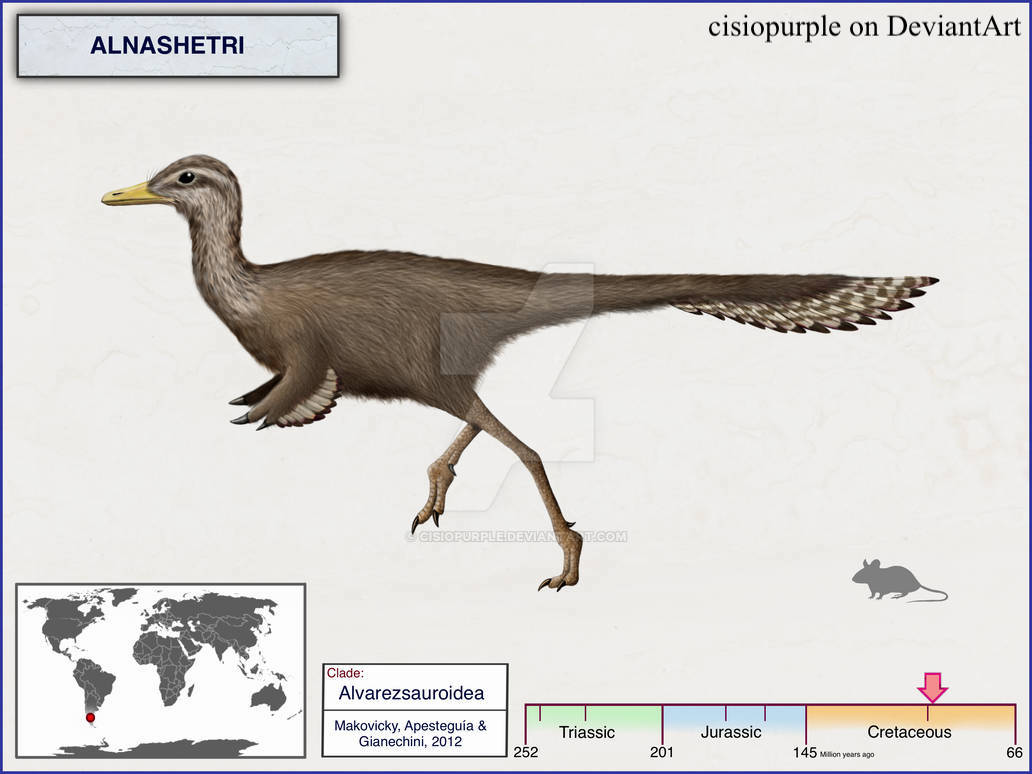Welcome to Alnashetri

Name Definition
means “slender thighs” in the Günün-a-kunna dialect of the Tehuelche language in Patagonia
Name Given By
Peter J. Makovicky, Sebastián Apesteguía, and Federico A. Gianechini in 2012
Location
Candeleros Formation in Rio Negro Province, Argentina
Classification
Dinosauria, Saurischia, Theropoda, Tetanurae, Coelurosauria, Maniraptora, Alvarezsauroidea
Size
about 2 ft long (0.6 meters)
Temporal Range
Cenomanian stage of the late Cretaceous, about 97 million years ago
Ecological niche
small insectivore
Species/Sub Species
A. cerropoliciensis
Diet
like most alvarezsaurs, Alnashetri probably had the adaptations necessary to find and eat insects like ants
Introduction
Alnashetri is a genus of alvarezsaurid theropods that lived in Argentina during the late Cretaceous. Alnashetri means “slender thighs” in the Günün-a-kunna dialect because of the slender hindlimbs discovered from the holotype as well as the fact that Alnashetri has only been described from leg bones. The species name which is cerropoliciensis is in reference to the Cerro Policía village which helped with some of the excavation in the La Buitrera locality. Even though it is only known from articulated hind limbs, Alnashetri has been identified as an alvarezsauroid, more basal than the alvarezsaurids. While most of the alvarezsaurids are known for having stubby arms ending in one clawed digit, it is unknown in Alnashetri, and further fossil discoveries will have to be made that will be attributed to this genus. However, it is most likely that Alnashetri had these reduced limbs in real life like the other alvarezsauroids, and it probably also had a preference for insects. Another problem with the scarce nature of the bones is that, while we know Alnashetri is within the alvarezsaur lineage, it is hard to classify because we don’t get the details of other anatomical features such as the skull or vertebrae. This has recovered Alnashetri as a basal alvarezsauroid for the time being, and more fossil discoveries must be made to classify it more specifically.